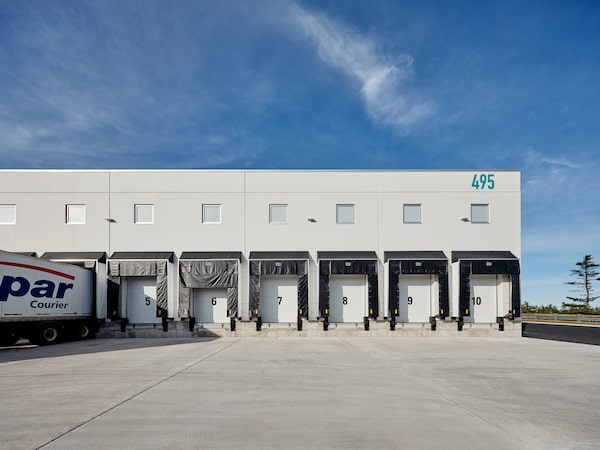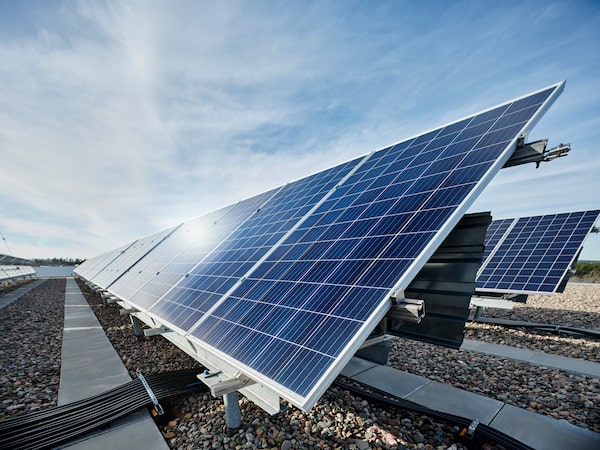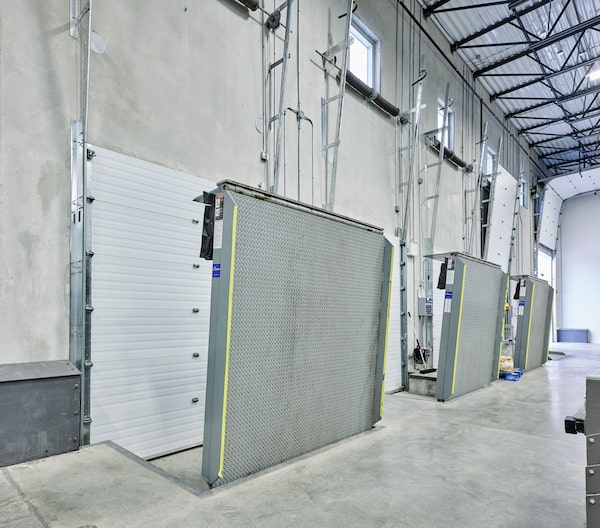
The Wilkinson Avenue Warehouses in Dartmouth, N.S., were designed and built to be net zero emitters of GHG emissions.JANET KIMBER/Handout
A Nova Scotia-based developer has built a new group of warehouses that it hopes will deliver the goods when it comes to combatting climate change.
The Wilkinson Avenue Warehouses in Dartmouth, N.S., are among the first industrial properties in Canada that aspire to be net-zero emitters of carbon-based greenhouse gas (GHG) emissions. The last of the project’s five buildings is expected to be completed by the end of this year.
This will give the Wilkinson Avenue project 300,000 square feet of space certified as net zero by the Canada Green Building Council (CAGBC), an umbrella group of designers, architects, developers, builders and owners that promotes design and performance standards.
“The move toward net-zero industrial buildings is slower than for offices, retail and residential buildings, but it’s starting to pick up speed,” says Judy Wall, president of East Port Properties Ltd., the builder and owner of Wilkinson Warehouses.
CAGBC lists some 30 net-zero projects in Canada, and companies such as Oxford Properties are building more environmentally friendly industrial projects in Canada and abroad, but Wilkinson Warehouses is the first and still one of the only Canadian industrial sites to reach net-zero certification so far.
A building must come as close as possible to not emitting any greenhouse gases from its operations or energy use to be considered net zero – for example, by using renewable power.

To reduce their carbon footprint, the warehouses are well insulated, airtight, have in-floor heating, with power from solar panels.JANET KIMBER/Handout
The federal government has set a goal for Canada to become net zero by 2050. Some 17 per cent of Canada’s carbon emissions come from existing buildings, and the number climbs to 30 per cent when the emissions from producing and using construction materials are added.
The move to net zero has been slower for warehouses and other industrial buildings than for other types of property for several reasons, says Avis Devine, associate professor of real estate finance and sustainability, Brookfield Centre in Real Estate and Infrastructure at York University’s Schulich School of Business.
“One reason is that industrial properties aren’t visible to the public the way offices, retail and homes are,” Dr. Devine says.
“A green building certification comes with a plaque that you can put on the front door, where people can see it and you can call a press conference to tell everyone. That opportunity for publicity and marketing can get lost when it’s an industrial building,” she says.
Another reason for the slow pace of change, Ms. Wall says, is that industrial buildings have different ownership and management relationships than other projects.
“With a warehouse, the leasing structure is usually different. The owner puts up a shell and then somebody comes in and rents it, and the renters pay all the costs for heating, electricity and so on,” she explains.
“So up to now, it has been of no consequence to the owner whether you’re green or not,” she adds. “It hasn’t mattered to the owners if you don’t maintain the building or you keep the doors open or the lights on all night.”
The industrial market is starting to become more environmentally friendly, though the move is still slow, says Tracy Macdonald, senior managing director of industrial for the GTA at Colliers Canada.
“It’s a struggle for owners to see the value in net zero. They want to know what the payback is, what return they’ll get and what they’ll save by being green,” she says. “We don’t have that kind of data yet; it’s being gathered by us and others in the building sector because we need it to make the case for industrial properties.”
Industrial owners are recognizing the need to go net zero even if they’re still hesitant to act, Ms. Wall adds. “As more attention to sustainability is paid by everyone, the owners see they have to take more responsibility.”
Older, unsustainable buildings become less marketable, she says – “they’re more expensive for tenants to operate and the owners have to offer discounts to companies to rent space.”
“Slowly, landlords are realizing that while you might not get a return right away, you can’t wait to make your building more sustainable because the discounting adds up. You need to maintain the value of your asset,” she says.
Landlords are realizing that while you might not get a return right away, you can’t wait to make your building more sustainable because the discounting adds up.
— Judy Wall, president of East Port Properties Ltd.
Investors and owners are getting the message, agrees Benjamin Shinewald, president and chief executive officer of BOMA Canada, umbrella group for building owners and managers.
“We know from our own [environmental] certification programs that there are things you can do right away to improve the sustainability performance of existing light industrial buildings,” Mr. Shinewald says.
“The time is now to go the extra mile,” he says.
To reduce the Wilkinson Warehouses’ carbon footprint, the developers took steps that include making the buildings well insulated and airtight (when it’s closed) and installing in-floor heating, with power from solar panels.
The in-floor heat is divided into zones. When the warehouses’ big doors are opened, the heat shuts down temporarily. There’s backup heat, but the idea is to encourage tenants to keep the doors shut when they’re not in use.

Industrial owners are recognizing the need to go net zero. Wilkinson Warehouses is the first and still one of the only Canadian industrial sites to reach net zero certification so far.Handout
Ms. Wall concedes that East Port still needs to purchase carbon offsets to reach the net-zero mark, buying credits from other companies and organizations that are lowering their greenhouse emissions.
Some environmentalists criticize offsets as greenwashing – pretending to be green – but Dr. Devine says some buildings simply do not have enough access to renewable energy to be truly net zero without some creative accounting.
“It depends on having the right price structure for carbon emissions. When there’s a price to emitting carbon, companies won’t treat sustainability as a frill,” she says.
Canada has set the price of emissions through a carbon tax that is now $65 a tonne, set to rise to $170 in 2030. The European Union carbon price is now approximately €90 (about $130).
Ms. Wall says she considers buying offsets a necessary evil for now.
“Just because you can’t do everything doesn’t mean you do nothing,” she says. “Every little thing we do will make a difference, until we can do it all.”